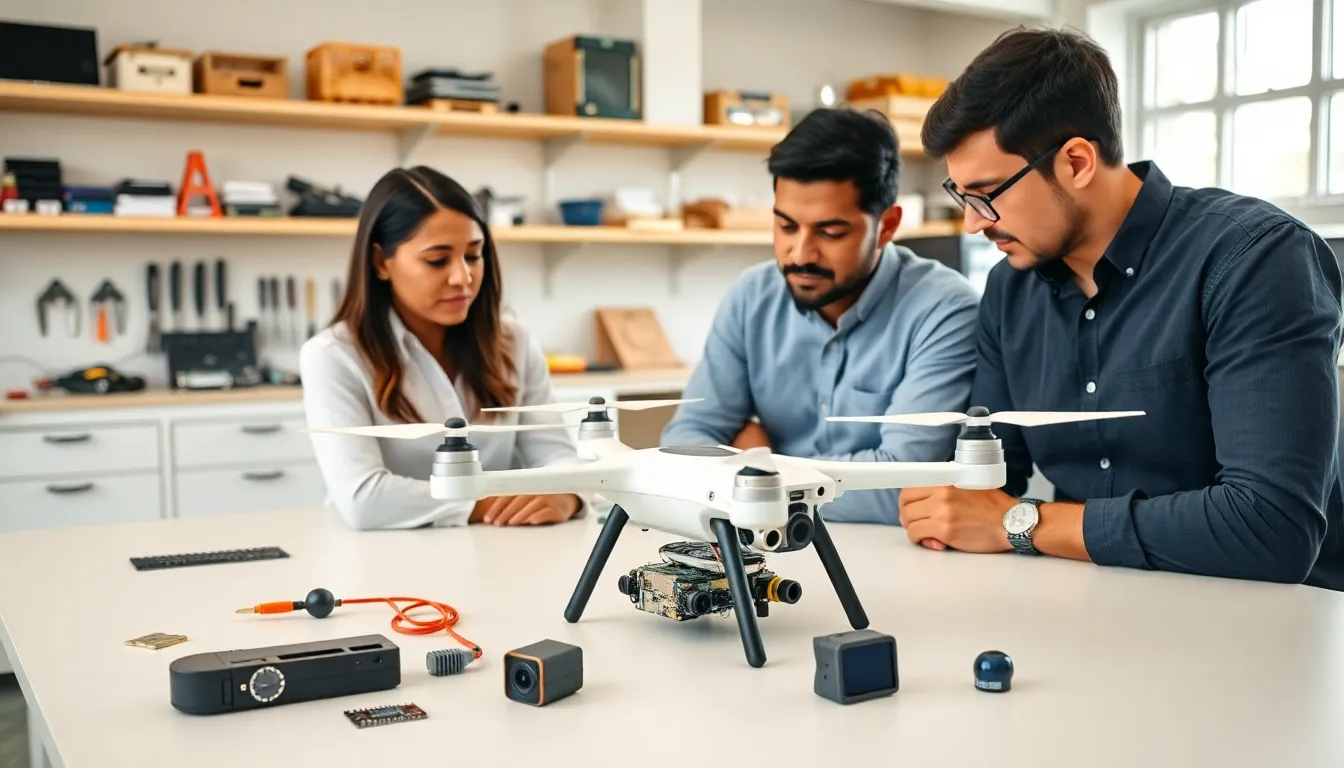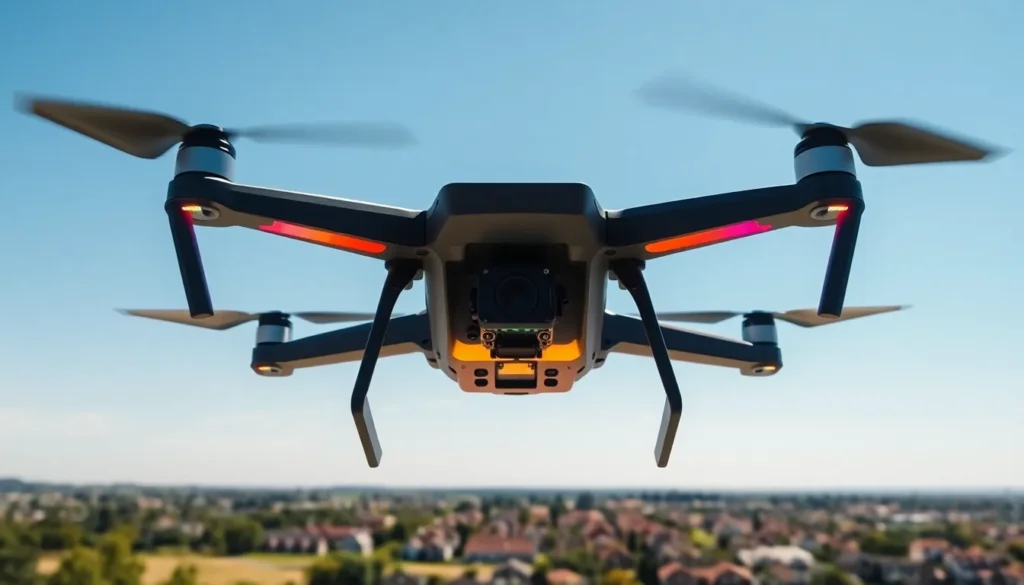Table of Contents
ToggleWelcome to the high-flying world of drones. If you thought drones were just for snapping selfies at the beach or spying on your neighbor’s barbecue, think again. At the helm of innovation is the WebBizMagnet Raspberry Pi Zero thermal drone, a groundbreaking gadget that’s going to make you reconsider the sky (and maybe your neighbor’s secret recipe). With the ability to do everything from temperature mapping to search and rescue operations, this drone is like the Swiss Army knife of the skies. Let’s jump into what makes the Raspberry Pi Zero drones tick, along with an overview of their capabilities and applications. You’ll be ready to launch your own exciting flight into the future.
Overview of Raspberry Pi Zero Drones

Raspberry Pi Zero drones are compact marvels proving that great things come in small packages. These drones incorporate the tiny but mighty Raspberry Pi Zero board, which serves as the heartbeat of many innovative projects. So what can this nifty little device do? Well, it controls all the flight dynamics and integrates various sensors that enhance its functionality, bridging the gap between hobbyists and professional users.
Key Features of Raspberry Pi Zero
What makes the Raspberry Pi Zero such a popular choice? For starters, it’s incredibly lightweight and affordable. This makes it accessible for DIY enthusiasts eager to dip their toes into the world of aerial technology. Also, its compatibility with numerous add-ons enables users to customize their drones significantly. Whether it’s a camera for aerial photography or a thermal sensor for detecting heat sources, customization options are virtually limitless.
Applications of Thermal Imaging in Drones
Thermal imaging technology has unlocked a myriad of applications across different sectors. Imagine being able to detect heat leaks in buildings, monitor wildlife, or even assist in disaster response, all from the comfort of your home. With a Raspberry Pi Zero drone equipped with thermal sensors, users can identify heat signatures invisible to the naked eye.
For instance, in search and rescue operations, drones can pinpoint stranded individuals by detecting their body heat, saving precious time when every second counts. On farms, thermal drones help monitor livestock health, ensuring that everything is running smoothly. Integrating thermal imaging into these drones isn’t just a gimmick: it’s a radical transformation that broadens our understanding and capabilities in several fields.
How the Raspberry Pi Zero Enhances Drone Performance
Let’s talk performance. The Raspberry Pi Zero isn’t just about looks: it’s a powerhouse in its own right. The seamless integration of hardware and software makes it a remarkable choice for drone enthusiasts. With advanced programming, users can fine-tune their drones for optimal performance in various conditions. Its low energy consumption ensures longer flight times, so you won’t crash-land right after takeoff.
Building Your Own Raspberry Pi Zero Thermal Drone
The exhilarating part is that you can build your own. With a little knowledge and the right components, you’re not far from having your own thermal drone hot off the assembly line. This hands-on approach not only cuts costs but also provides an educational experience that can set the stage for other tech ventures.
Essential Components Required
To construct your thermal drone, you’ll need a few essential components:
- Raspberry Pi Zero Board: The heart of your drone.
- Thermal Camera Module: The eyes that see in the dark.
- Flight Controller: This is what allows you to fly your creation.
- Motor and Propeller: For taking off and soaring through the skies.
- Battery: Make sure it’s lightweight to maximize flight time.
- Frame: The structure that ties everything together, usually available in lightweight materials like carbon fiber.
Step-by-Step Assembly Guide
Ready to roll up those sleeves? Constructing your drone requires precision and a bit of patience. Here’s a streamlined assembly guide to get you airborne in no time.
Software and Configuration for Optimal Performance
- Install the Raspberry Pi OS: Start by downloading the latest OS.
- Set Up Your Camera: Follow the prompts to connect your thermal camera to the Raspberry Pi Zero. Make sure to adjust the settings for your specific needs.
- Connect the Flight Controller: This is crucial for controlling your drone remotely.
- Calibrate the Sensors: Ensure that your drone can properly read data from the thermal sensor.
- Test Flight: After assembly, conduct a test flight in a safe area to ensure everything functions smoothly.
Common Challenges and Solutions
Like any tech venture, building and flying drones comes with its own set of challenges. Many first-time builders face difficulties such as maintaining stable flight or calibrating sensors correctly. One common issue is battery management: if you don’t choose the right battery size and type, your drone can run out of juice mid-flight.
To tackle this, meticulous planning is essential. Ensure you’ve done your research on power management to enhance the longevity of your drone’s battery life. If the drone seems unbalanced, check your weight distribution. A little tinkering can make a world of difference.
Future Trends in Thermal Imaging Drones
The future looks promising for thermal imaging drones. As technology progresses, we can expect even smaller, lighter thermal sensors with improved capabilities. Imagine flying drones that not only detect heat but also integrate AI for real-time analysis of thermal data. This progression can empower industries such as agriculture, construction, and emergency services with unprecedented insights. Besides, advancements in battery technology might soon enable longer flight times, making thermal drones even more efficient and effective.







